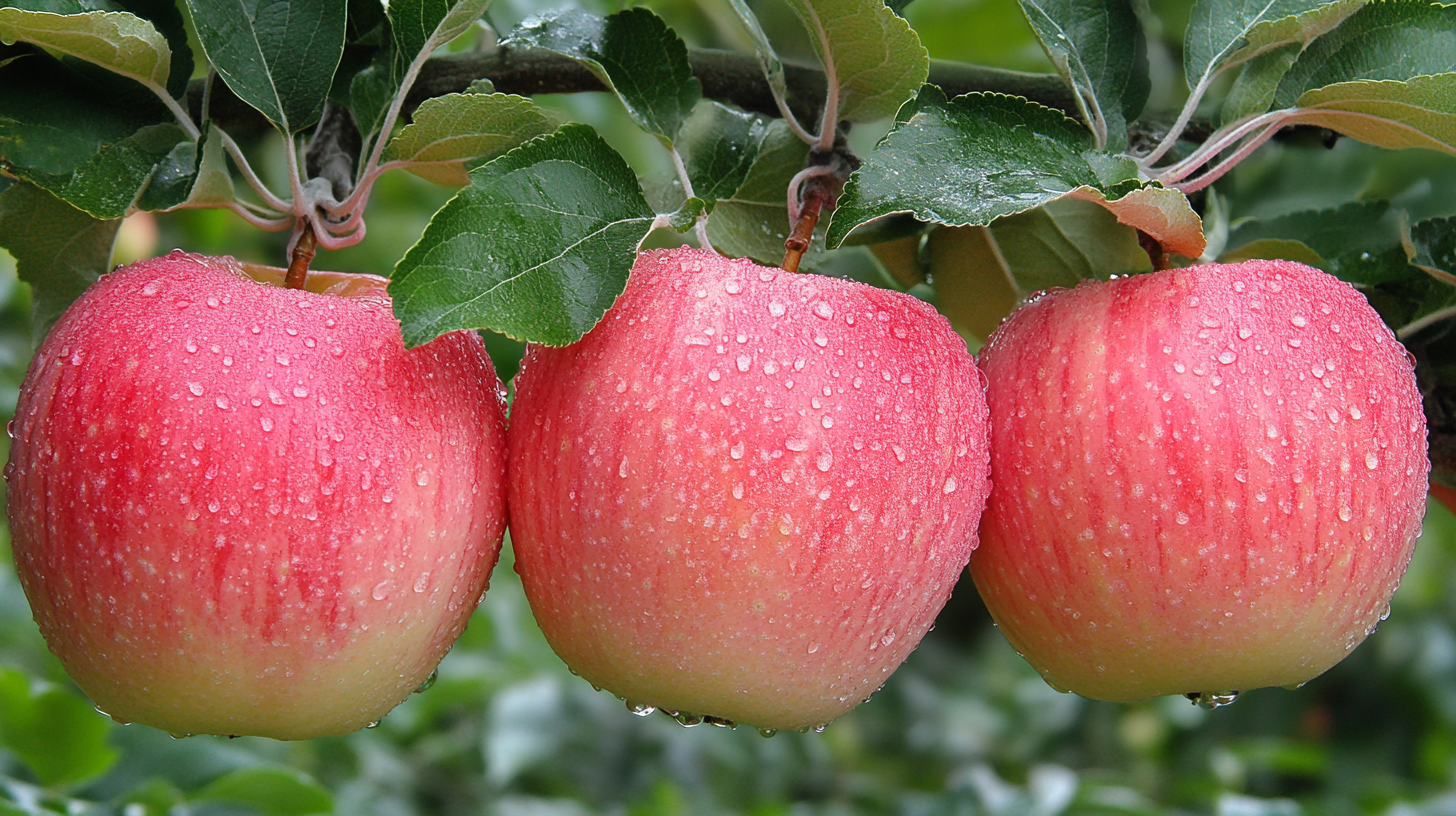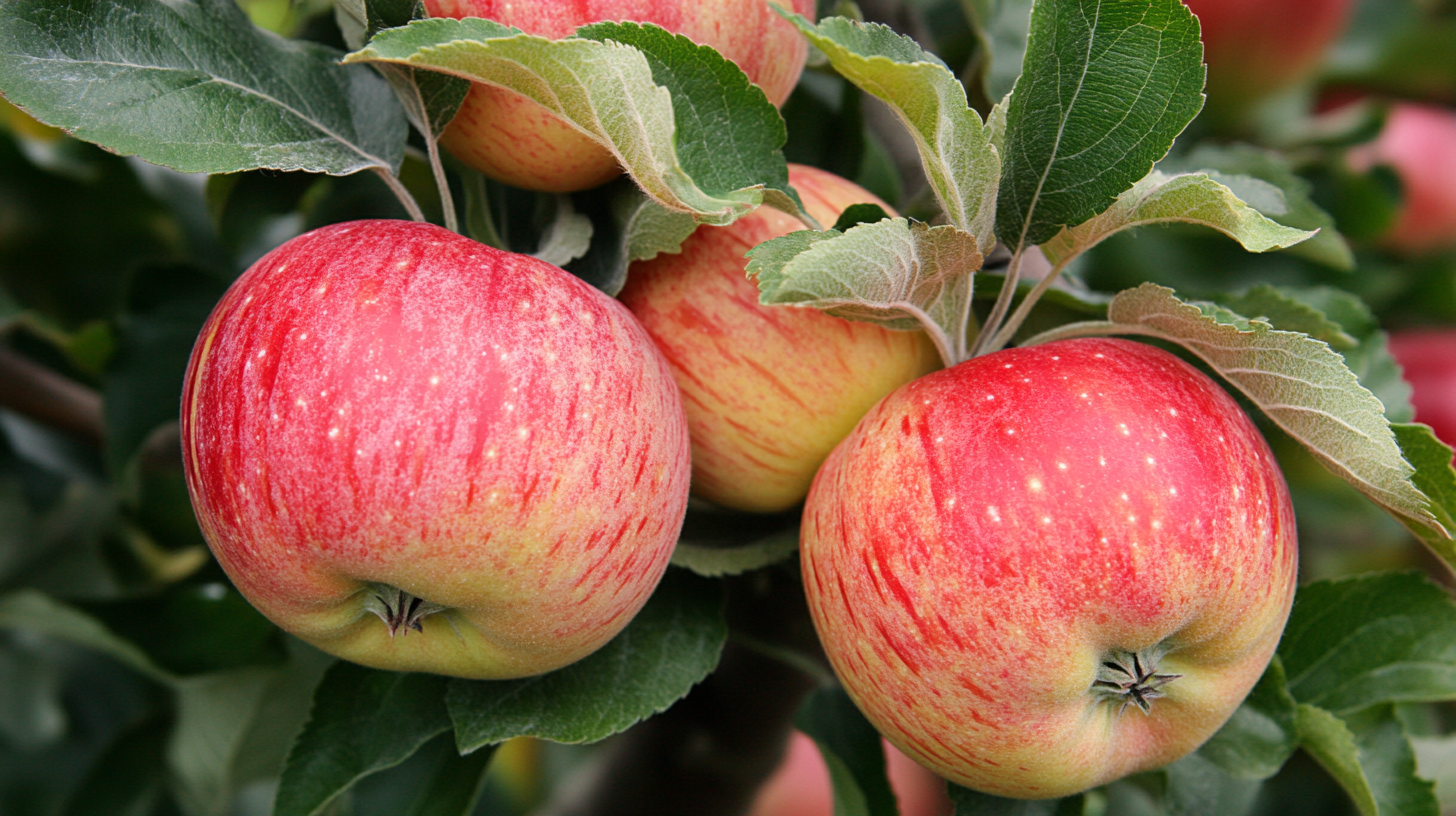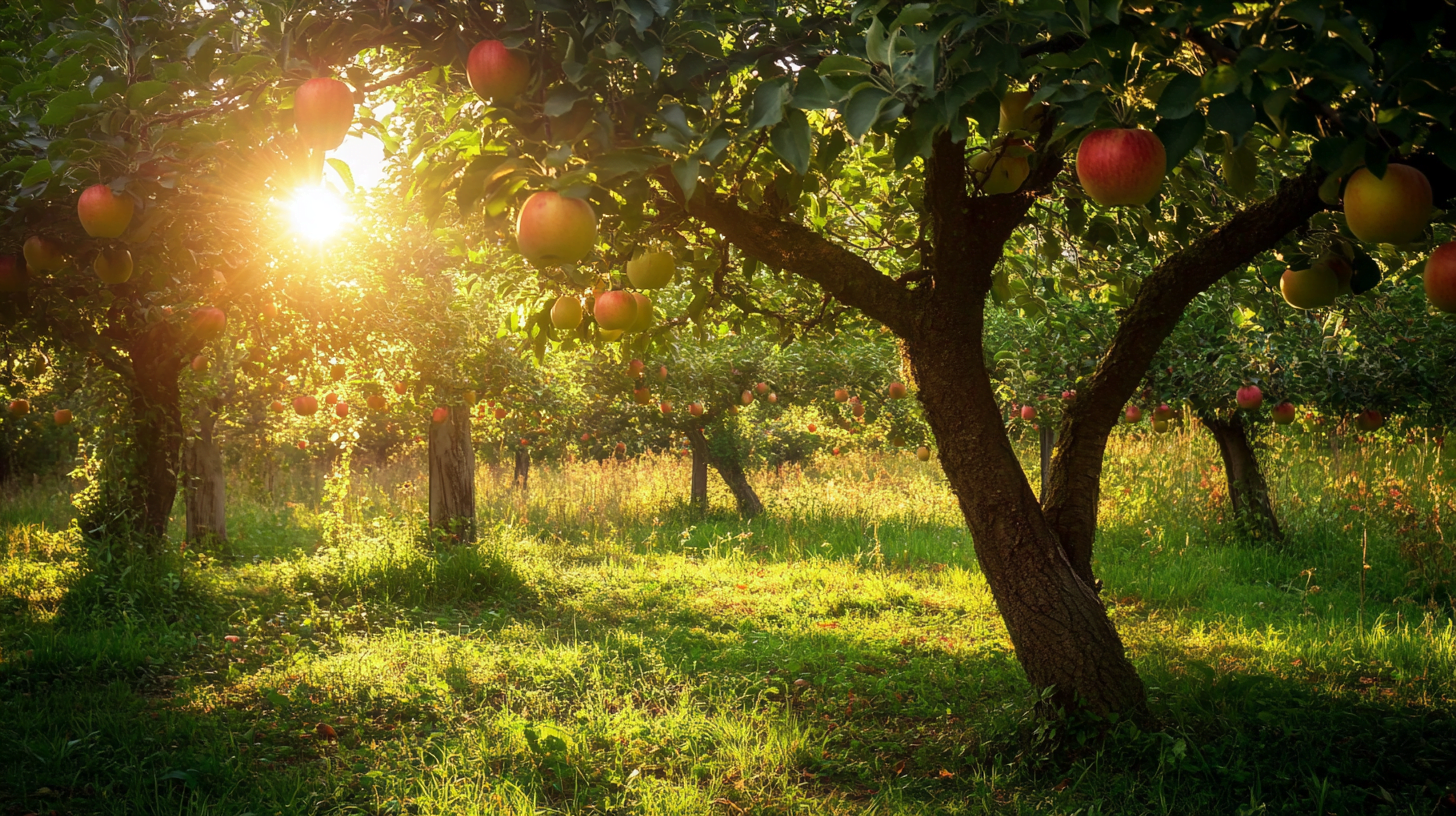Beautiful Plants For Your Interior
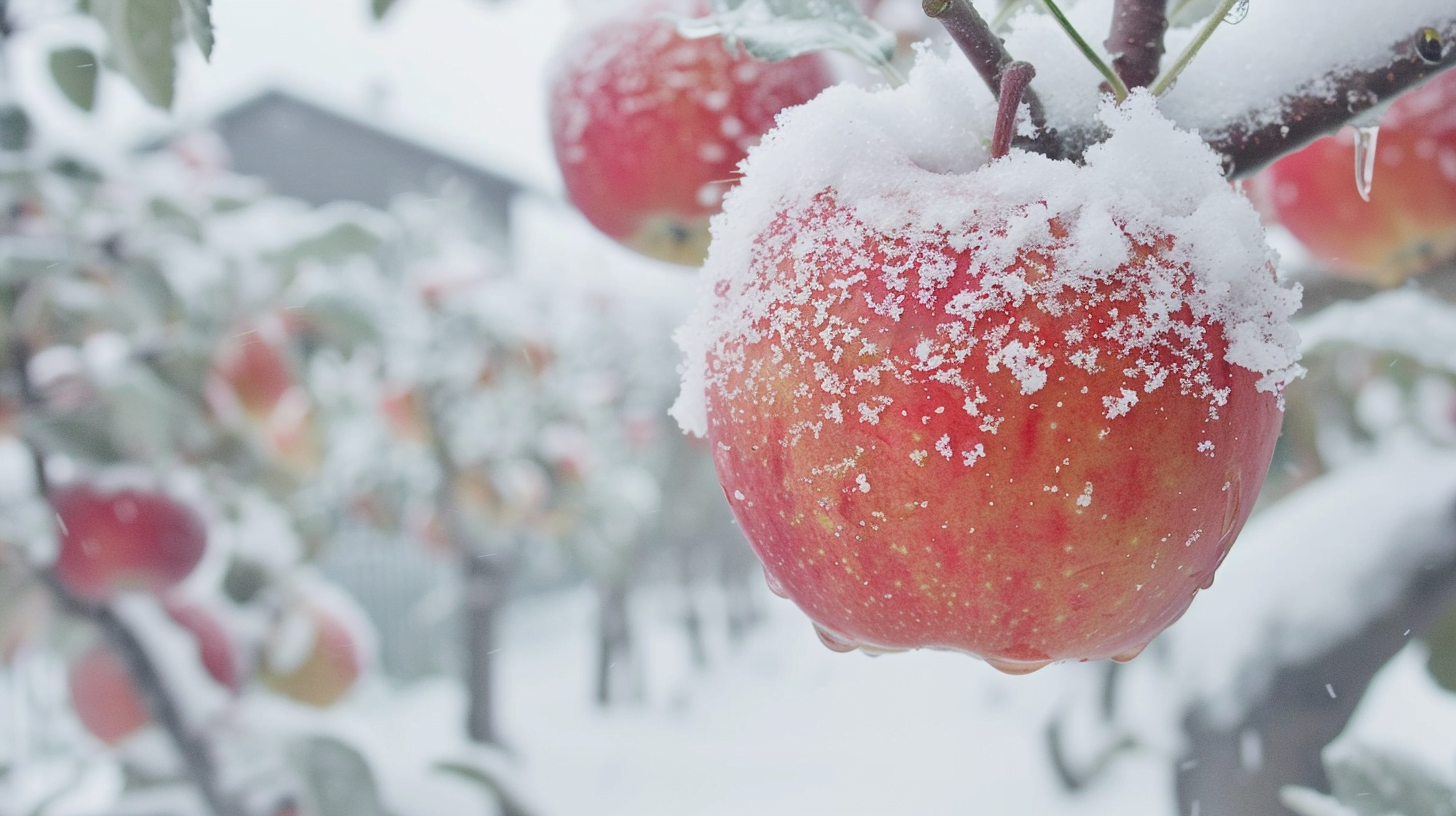
Table of Contents
Apple trees are remarkable organisms that have evolved sophisticated mechanisms to endure harsh winter conditions. From dormancy to cellular adaptations, these fruit-bearing giants employ various strategies to protect themselves during the coldest months of the year. In this comprehensive guide, we’ll explore the fascinating ways apple trees survive winter, the challenges they face, and how growers can support their trees through this critical period.
Understanding Apple Tree Dormancy
Dormancy is a crucial survival strategy for apple trees during winter. This state of reduced metabolic activity allows trees to conserve energy and protect sensitive tissues from freezing temperatures.
The Science Behind Dormancy
Apple tree dormancy is triggered by environmental cues, primarily shorter day lengths and cooler temperatures in autumn. This process involves complex hormonal changes within the tree, including:
- Increased production of abscisic acid (ABA), which inhibits growth
- Decreased levels of growth-promoting hormones like auxins and gibberellins
- Changes in gene expression that prepare cells for cold stress
As trees enter dormancy, they shed their leaves to reduce water loss and redirect resources to essential survival functions. The timing of dormancy is critical – if it occurs too early, trees may miss out on valuable growing time, but if it happens too late, they risk damage from early frosts.
Chilling Hours and Breaking Dormancy
One of the most intriguing aspects of apple tree dormancy is the concept of chilling hours. Chilling hours refer to the cumulative time a tree experiences temperatures between 32°F and 45°F (0°C to 7°C). This cold exposure is necessary for trees to break dormancy and resume growth in spring.
Different apple varieties have varying chilling requirements:
| Apple Variety | Chilling Hours Required |
|---|---|
| Granny Smith | 400-600 |
| Gala | 500-600 |
| Fuji | 600-800 |
| Red Delicious | 700-800 |
| Honeycrisp | 800-1000 |
Climate change poses a significant challenge for apple growers, as warmer winters may not provide sufficient chilling hours for some varieties. This can lead to delayed or uneven bud break, reduced flowering, and ultimately, lower fruit yields.
Apple Trees’ Natural Winter Adaptations
Apple trees have developed several remarkable adaptations to survive freezing temperatures:
- Cold hardiness: Trees gradually increase their tolerance to cold throughout autumn and early winter. This process involves changes at the cellular level that prevent ice formation within cells.
- Antifreeze proteins: Some apple varieties produce special proteins that lower the freezing point of cellular fluids, protecting against ice crystal formation.
- Dehydration: Trees reduce the water content in their cells, which helps prevent damaging ice crystals from forming.
- Flexible cell walls: The cell walls of winter-hardy tissues become more elastic, allowing them to withstand the pressure of expanding ice in intercellular spaces.
- Root system adaptations: While above-ground parts of the tree can withstand extreme cold, roots are more vulnerable. Trees store carbohydrates in their roots and rely on soil insulation to protect these vital structures.
Preparing Apple Trees for Winter
Proper care in the fall can significantly improve an apple tree’s chances of winter survival. Here are some essential steps for growers:
- Watering: Ensure trees are well-watered until the ground freezes. This helps prevent winter desiccation.
- Fertilization: Avoid late-season nitrogen applications, which can stimulate new growth vulnerable to frost damage.
- Pruning: Wait until late winter or early spring for major pruning. If necessary, only remove dead or diseased branches in fall.
- Mulching: Apply a 2-4 inch layer of organic mulch around the tree’s base, but keep it away from the trunk to prevent rodent damage.
- Pest control: Remove fallen fruit and leaves to reduce overwintering sites for pests and diseases.
“Proper winter preparation is like tucking your apple trees in for a long winter’s nap. It’s all about giving them the best chance to wake up healthy and ready for spring.” – Dr. Emily Hoover, Professor of Horticulture
Common Winter Threats to Apple Trees
Despite their adaptations, apple trees face several challenges during winter:
- Frost damage: Late spring frosts can damage emerging buds and blossoms.
- Sunscald: Rapid temperature fluctuations can cause bark splitting on the southwest side of trunks.
- Rodent damage: Mice and voles may gnaw on bark under snow cover.
- Winter desiccation: Strong winds and frozen soil can cause water loss faster than roots can replace it.
To protect against these threats, growers can:
- Use frost protection methods like wind machines or sprinklers for valuable crops
- Paint trunks with white latex paint to reflect sunlight and prevent sunscald
- Install tree guards or hardware cloth to deter rodents
- Plant windbreaks to reduce desiccation in exposed orchards
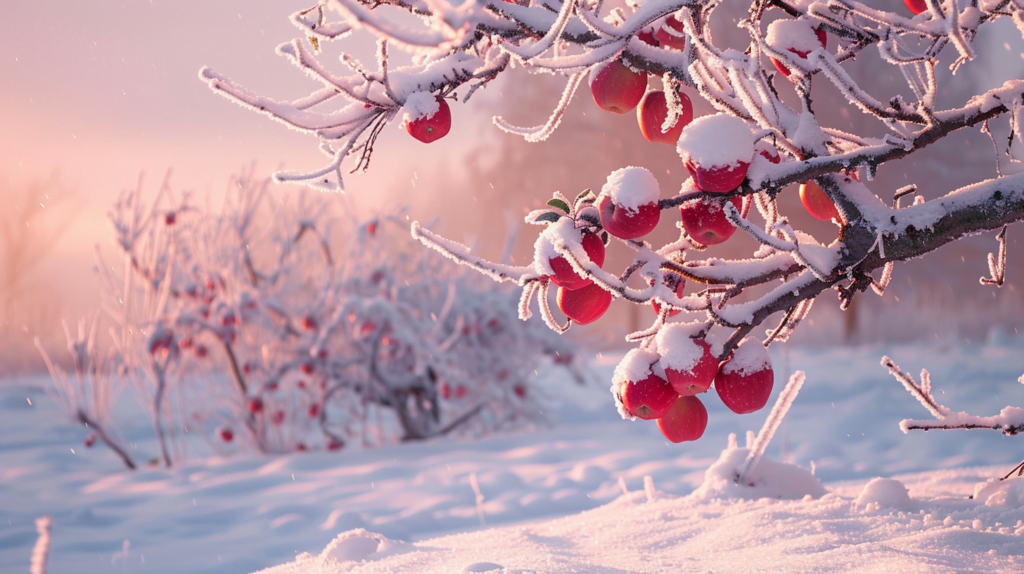
Case Study: Surviving the Polar Vortex
In January 2019, the Midwest United States experienced an extreme cold event known as the polar vortex. Temperatures plunged to -30°F (-34°C) in some apple-growing regions. Despite these harsh conditions, many orchards survived due to:
- Proper fall management practices
- Selection of cold-hardy varieties
- The trees’ natural state of deep dormancy at the time
This event highlighted the importance of variety selection and good orchard management in mitigating extreme weather risks.
Conclusion: The Resilience of Apple Trees
Apple trees have evolved remarkable strategies to survive winter’s challenges. From dormancy mechanisms to cellular adaptations, these trees demonstrate nature’s ingenuity in the face of harsh conditions. As climate change alters traditional growing patterns, understanding and supporting these natural processes becomes increasingly important for apple growers.
By selecting appropriate varieties, implementing sound management practices, and staying informed about the latest research, orchardists can help ensure their apple trees not only survive but thrive through winter, setting the stage for bountiful harvests in the years to come.
